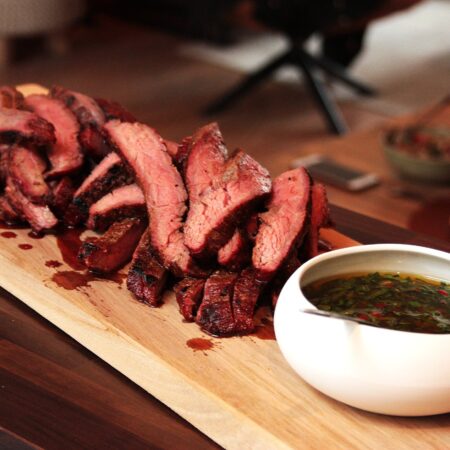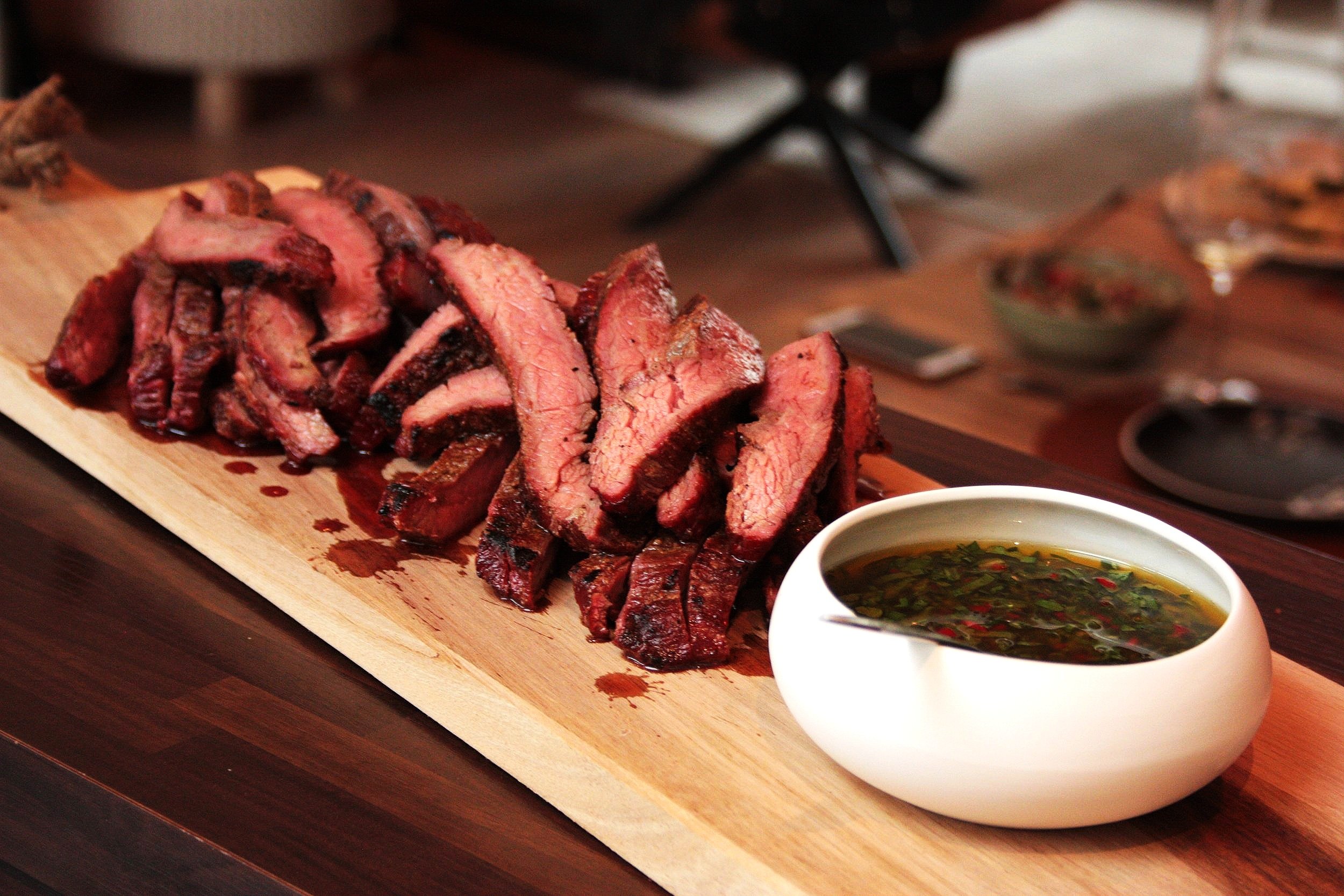Imagine this: a juicy, perfectly cooked bavette that melts in your mouth, infused with the irresistible taste of smoke and fire. That's what you can expect with reverse sear smoked bavette. This culinary adventure combines the finesse of precision cooking with the power of smoking on a BBQ for an exceptionally tasty result.

What is bavette?
Bavette, also called flank steak, is beef that we increasingly see as steak on restaurant menus these days. It comes from the abdominal wall of the cow and is working meat. The cow has had to work a lot to protect the organs in the abdomen. It is veined with fat and contains little connective tissue. The fat veining ensures that this meat has a lot of flavor, but it must be sliced thinly, otherwise it can be a bit tough.

Reverse sear, what is that?
Reverse sear is a cooking method often used when preparing steaks and other meat dishes on the grill. The inverse of “reverse” refers to the order of steps compared to the traditional method. In the traditional method, a steak is first quickly seared over high heat and then moved to a less hot zone to continue cooking until the desired doneness is reached. reaches. This can lead to a well-cooked outside but a less evenly cooked inside. With the reverse sear method, the meat is first slowly cooked at a lower temperature, usually in the indirect heat zone of the grill or in the oven, until it is close to the desired doneness. The meat is then moved to the hot zone of the grill for a quick sear to create a beautiful crust and flavorful grill marks.
The advantages of the reverse sear method are that it ensures more even cooking of the meat and that the outside is not overcooked while the inside is still the desired doneness. This allows you to get a steak with a juicy, tender inside and a crispy, flavorful outside.
The reverse sear method can be applied to a variety of meats, including bavette, ribeye, sirloin steak and more, and it is popular among grill enthusiasts who strive for perfectly cooked steaks. It takes some patience and careful control of the temperature, but the results are often worth it for those who like juicy and flavorful grilled meats.
Preparation of the bavette
We are going to prepare this bavette "reverse sear", which means that we first cook it indirectly at a temperature of approximately 110 degrees. We do this until a core of 42 degrees is reached in the center of the meat. Of course we combine this with a nice block of apple wood for an extra intense taste!
Then we grill the bavette at a high temperature. We do this at a temperature of approximately 280/300 degrees Celsius, up to a core temperature of 52 degrees. Let the meat rest for 5 to 10 minutes and enjoy!

Reverse sear bavette
Equipment
- Kamado or BBQ
- Apple smoking wood
- Core temperature meter
Ingredients
- 1 kilos Bavette preferably grain fed
For the rub
- freshly ground pepper
- salty
- smoked paprika powder
- garlic powder
Instructions
Preparation
- Prepare the barbecue for indirect cooking at 110/120 degrees.
- Sprinkle the bavette with the spices.
Smoking the meat
- Add the apple smoking wood to the BBQ and wait until it starts to smoke.
- Place the meat on the grill and insert the core temperature gauge into the thickest point of the meat. Cook it to a temperature of 42 degrees.
- Once this is done, place the meat (without aluminum foil) on a plate, so that you can prepare the BBQ for grilling at a temperature of approximately 300 degrees.
Grilling the meat
- Briefly grill the meat on both sides, making sure that the core temperature does not exceed 52 degrees!
- When the meat has a nice grill color on the outside, let it rest in aluminum foil for 5 to 10 minutes.
Tranching the meat
- Cut the bavette against the grain into thin slices and then enjoy the intense flavors of this top piece of meat!



